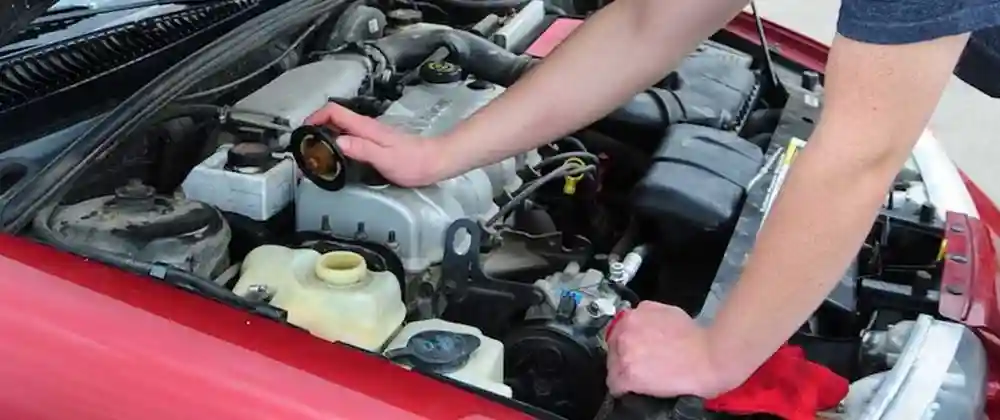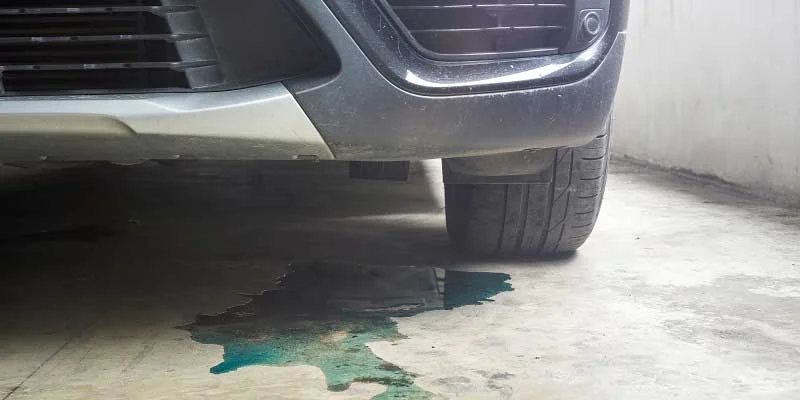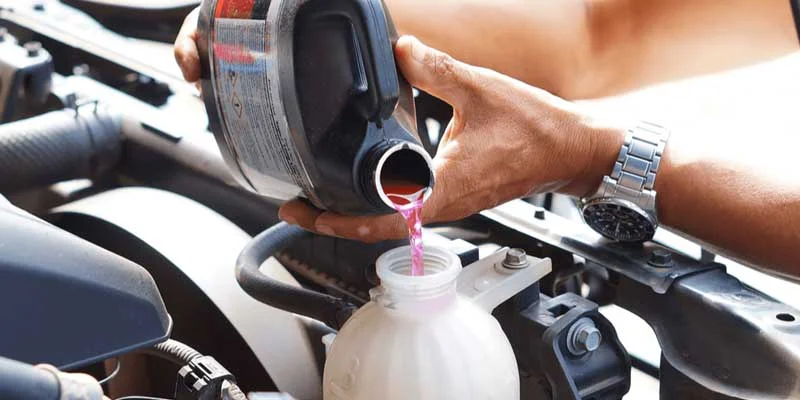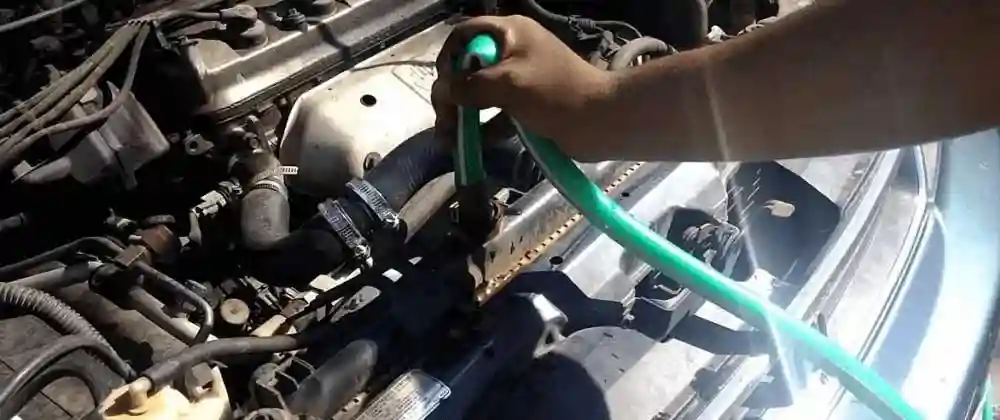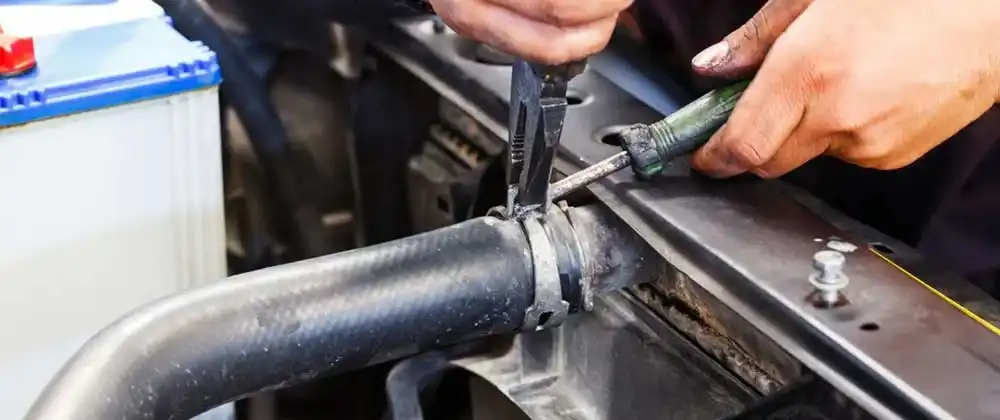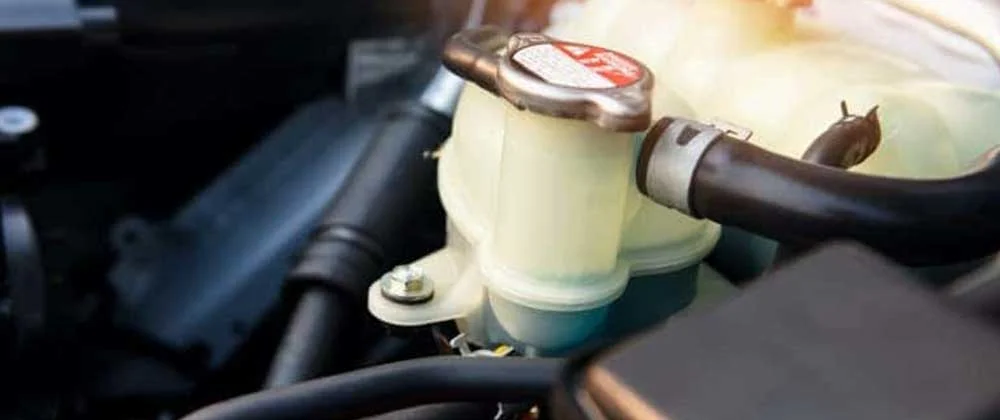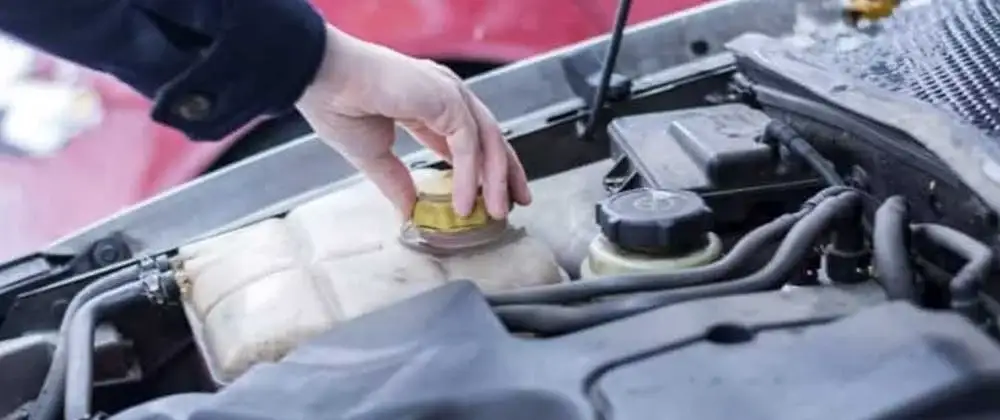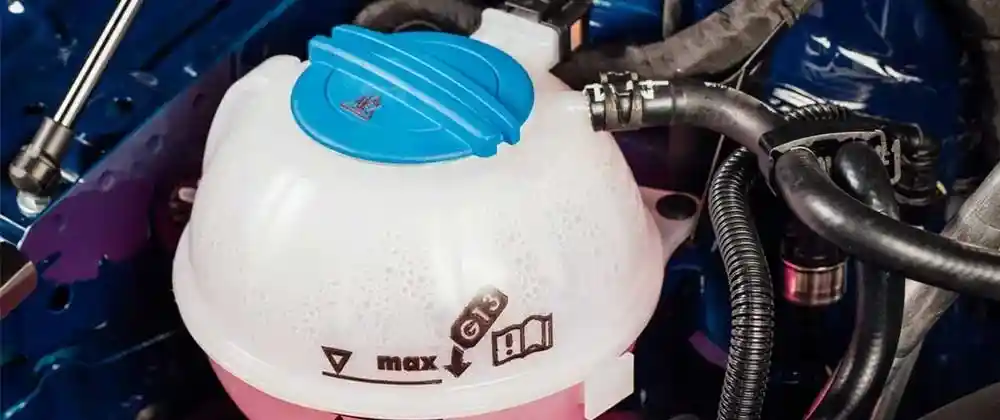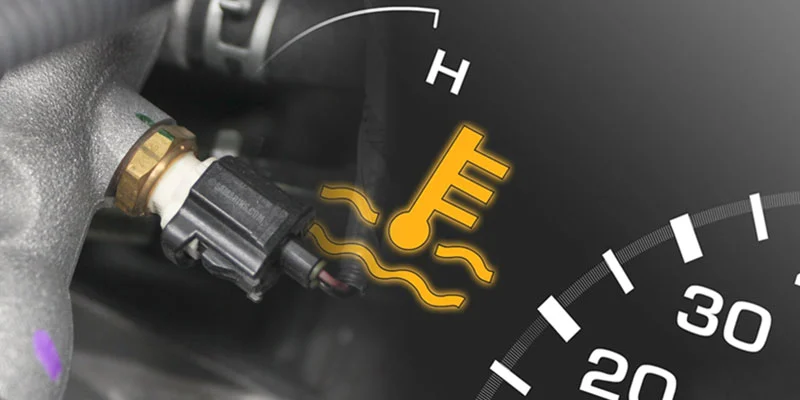Coolant top-up is one of the significant aspects of any vehicle that is often ignored unless it leads to severe problems. Knowing how long a coolant lasts to top up or run a coolant flush just in time to save your engine from any damage is essential.
Those who are confused about the concepts of Coolant and Anti-freeze,
Coolant = Distilled Water + Antifreeze.
The presence of additives in coolant helps in improving the engine performance, According to Popular Mechanics.
It would help if you considered changing the coolant after the first 1,40,000 miles or 10 months, whichever is earlier. After this, you should consider changing the coolant after 24 months or 20,000 miles, whichever is less. Performing visual inspections for any impurity and the coolant levels check during the overhaul is essential.
Any discolouration or turbidity is an indicator to run a coolant flushing.
When Should I Replace the Coolant and Clean the Cooling System?
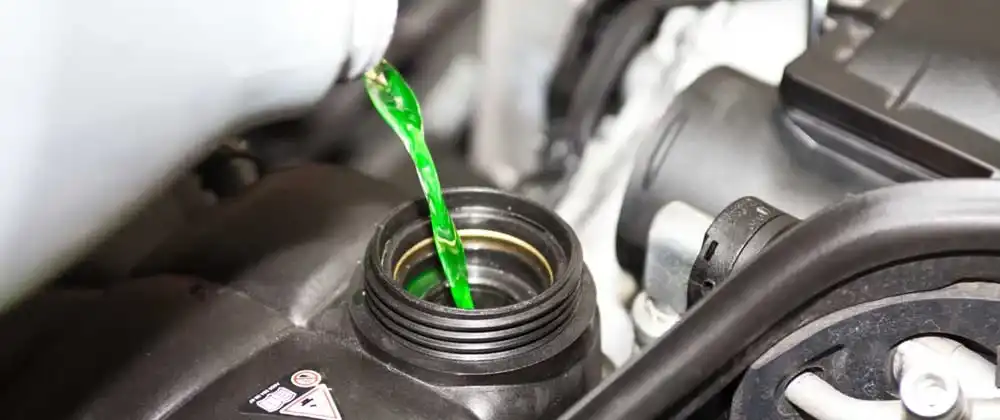
If you find any of the following indicators, it’s time for a coolant change:
1. Problems When Starting a Hot Engine
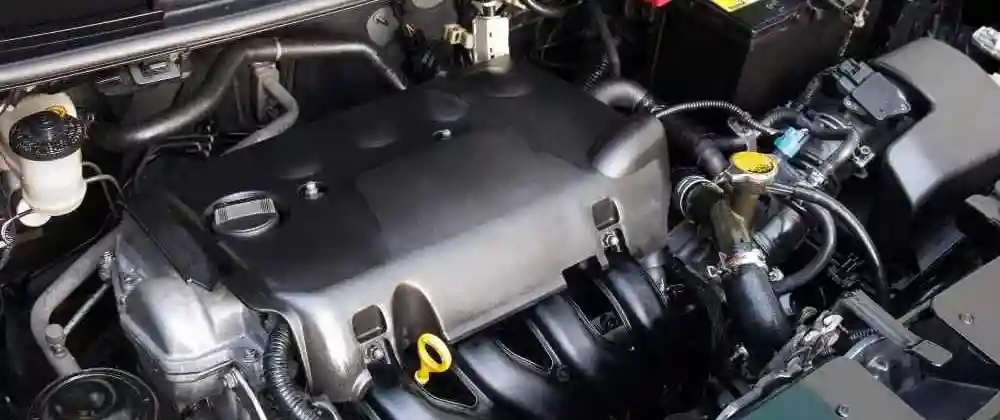
To protect the metallic surfaces of your engine from corrosion, you can add a corrosion inhibitor to the coolant. These features will begin to deteriorate as the fluid becomes more acidic. Manufacturers recommend that coolant be replaced periodically.
2. Coolant Discoloration
When contaminated with debris and prolonged use, the coolant in your car radiator discoloured. Even the additives start depleting within the coolant and reduce its efficiency. If you find any colour change in the coolant or its appearance cloudy, it’s time for a coolant flushing.
3. Any Potential Leak
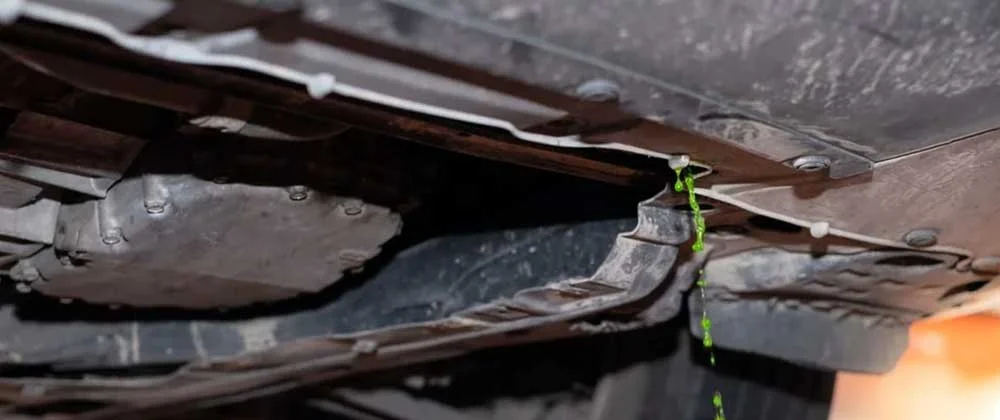
If you find that the coolant levels are dropping down significantly in shorter intervals, it indicates any leak in the radiator, water pump or even in the hose. It’s time to run a coolant flush and detect the cause of the coolant leak.
4. The Engine is Running Rough
The cooling system could be faulty if the engine runs rough. The engine may also be overheating, which could cause the cylinder not to fire. Check the temperature gauge to see if it rises near the danger zone.
5. Steam coming from Engine
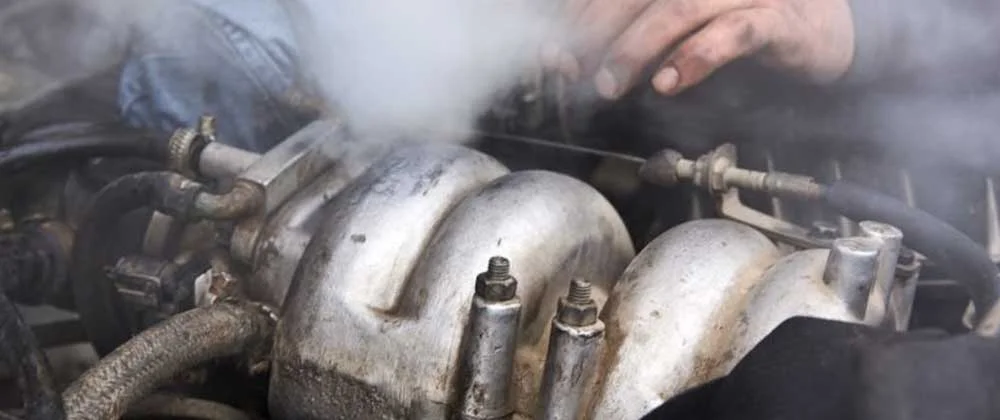
If steam is visible under your hood, your engine is likely overheating. If this happens, however, you will not want to continue driving. You may notice some hissing sound from the engine.
As soon as you can, pull over and switch off the engine. Call a tow truck and take your car to the mechanic.
6. Coolant Flecks of Rust
You can see flecks of rust in your coolant. It is an indication of corrosion. Leakage can result in engine damage.
7. The Coolant Level is Low
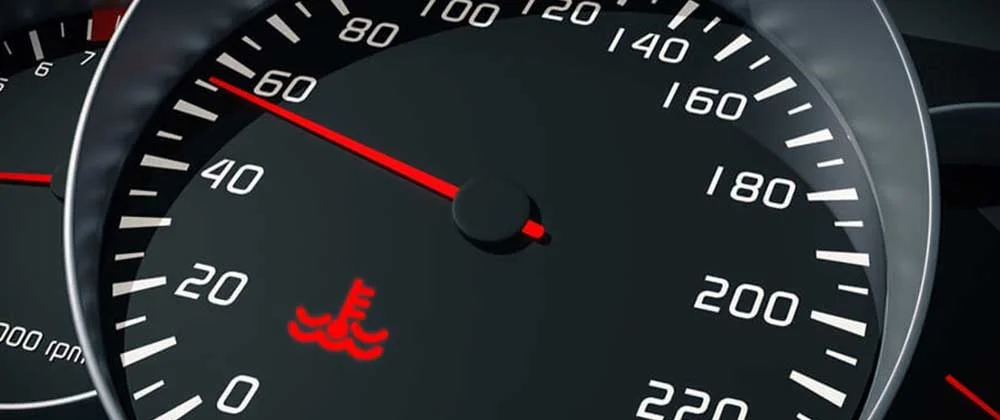
Your car may be losing coolant if it has a low coolant level. It could be due to a coolant leakage or coolant evaporating.
How often should I change the coolant?
- The frequency at which the coolant should be changed varies depending on the vehicle’s age, make, and model. However, it should be changed every 60,000 and every 30,000 miles. Environmental regulators recommend that coolants be changed at longer intervals to reduce the amount of waste fluids. Many automakers now have long-lasting coolants in their vehicles. These coolants come with long-lasting additives that safeguard the engine from overheating for a prolonged time.
- The ideal coolant level should fall between the minimum and maximum levels. It should not be below the minimum level.
- You should immediately change the radiator fluid if you notice any discolouration.
- The fluid may be impure if small dirt particles are found on top of the fluid. It should be investigated, and the coolant must be changed.
- The frequency of changing coolant will depend on the coolant used and the vehicle’s environment.
Do the coolant intervals differ?
Yes, coolant intervals vary.
Coolant type is responsible for causing the differences in coolant change intervals.
- Silicated coolant is one of the popular type of coolant. It is made up of silicates that protect the engine against corrosion.
These silicates can cause problems if they build up over time. If you are using silicate coolant, you should consider a coolant flush after every 30000 miles or 24 months.
- Extended drain coolant, which isn’t made with silicates, is a newer type. It can last for longer than silicated coolant.
Extended drain coolant is not recommended for all vehicles. To find out if your vehicle is suitable for this coolant, consult your owner’s manual.
Another reason for the differing coolant change intervals is the cooling system used inside the vehicle.
A closed cooling method is used on some vehicles. This coolant circulates only through the engine and does not come in contact with air.
Because the coolant doesn’t have to be changed frequently, this system has a more extended coolant change interval. Other vehicles use an open cooling system.
The coolant can circulate through the engine and come into contact with the atmosphere. Because the coolant must be changed more frequently, this type of system has a shorter coolant change interval.
Can I use water instead of Coolant?
You should not use water as a coolant. Water will freeze in winter and boil during summer, which could cause engine damage. When water is mixed with glycol, it will lower the freezing point and increase the boiling point.
Coolant is made to withstand extreme temperatures and protect your engine. It is essential to choose the proper coolant for your vehicle.
You can use water as a coolant for emergencies only. However, you should take your vehicle in for a flush as soon as possible.
Frequently Asked Questions
Do I Need Coolant in Winters?
Coolant is essential in winter because it helps maintain a constant temperature in the engine.
Your car must have sufficient coolant before it gets cold. Mechanical components can freeze, cracking the engine block.
Before winter, check the coolant level and add more if needed. A mechanic should inspect the cooling system to ensure everything works properly.
Is it possible that coolant levels drop without leaking?
Coolant level can drop over time, even if there is no leak. One of the apparent reasons is evaporation.
You can add coolant to your reservoir if you notice the coolant level is low. If coolant doesn’t stay full after you add it, another problem may occur.
It could be caused by a bad head gasket, water pump leakage or any other reason. If you notice any of these symptoms, it’s worth taking your car to the shop for a thorough check-up.
Conclusion
Depending on the type of coolant the use of vehicle, the duration of how long does coolant last vary. On average, it is recommended to keep a period check on the discolouration of the coolant to replace it in time.

My Name is Christopher Angels, and I am a postgraduate in mechanical engineering. Cars have always excited me as a child, and soon I decided to dive into the world of cars by pursuing mechanical engineering. I also worked as a Mechanic for over 3 years to understand Cars’ anatomy and how each part contributes to its working.
My Name is Christopher Angels, and I am a postgraduate in mechanical engineering. Cars have always excited me as a child, and soon I decided to dive into the world of cars by pursuing mechanical engineering. I also worked as a Mechanic for over 3 years to understand Cars' anatomy and how each part contributes to its working.

